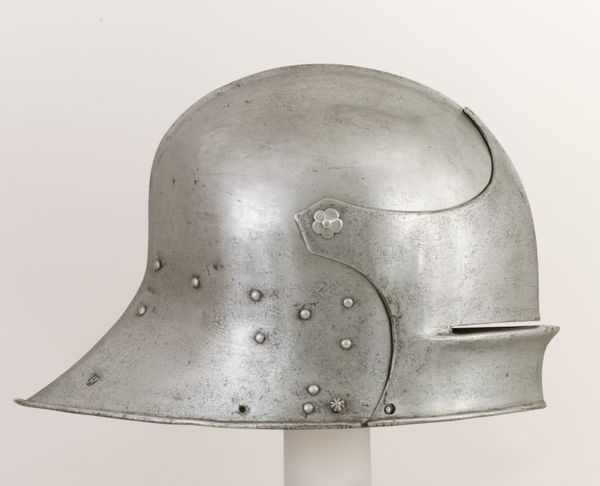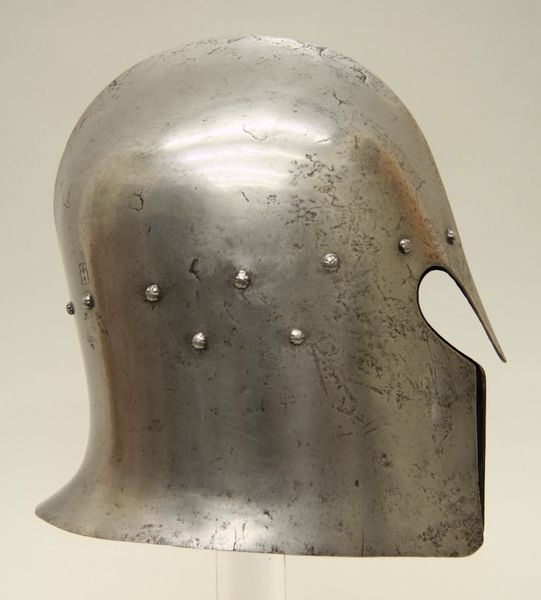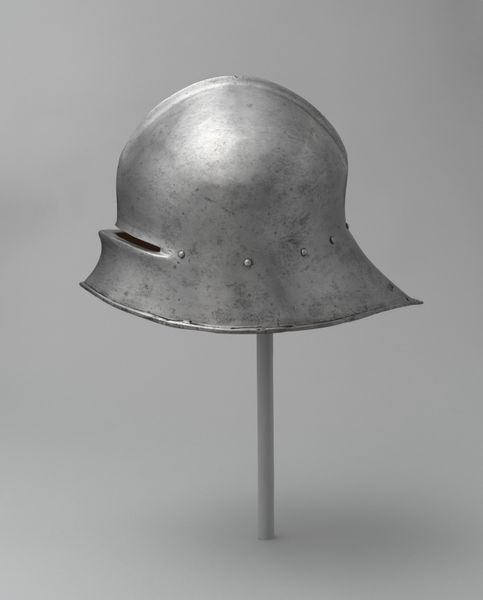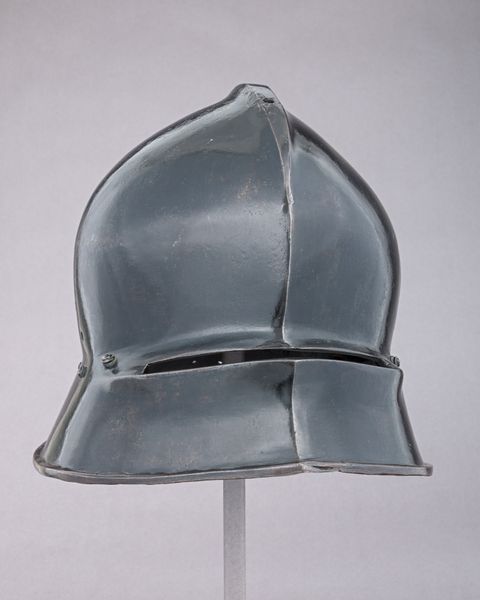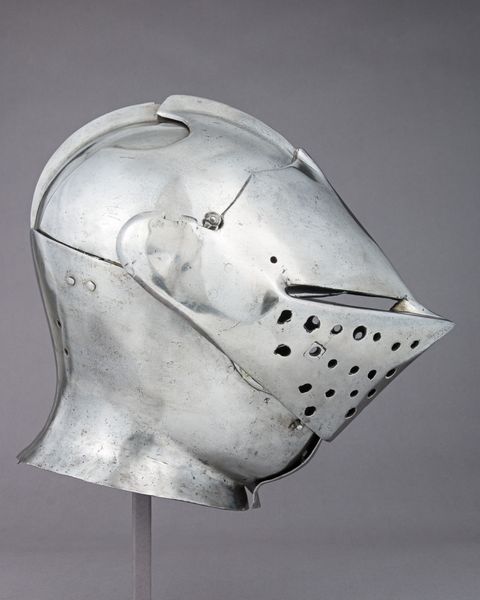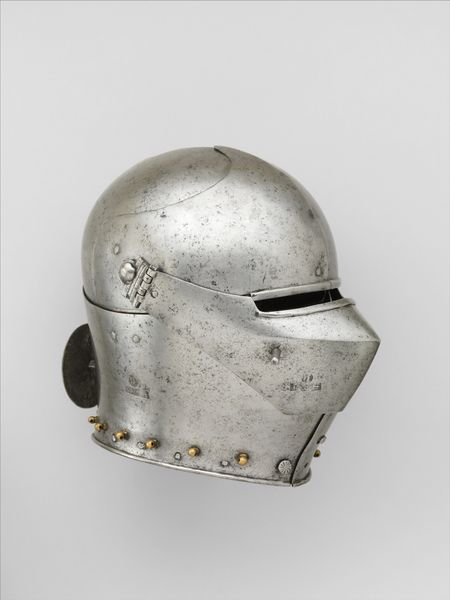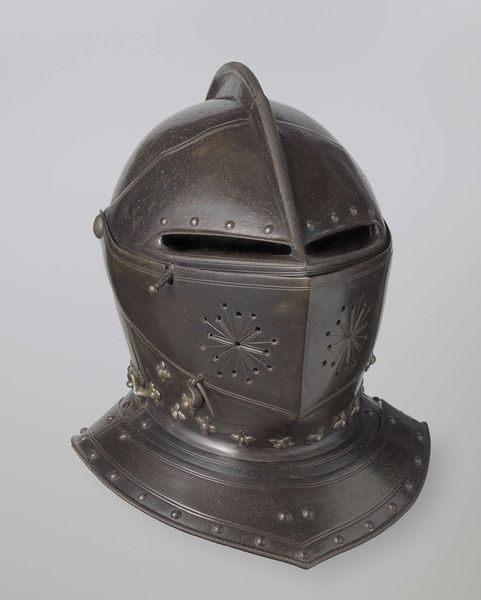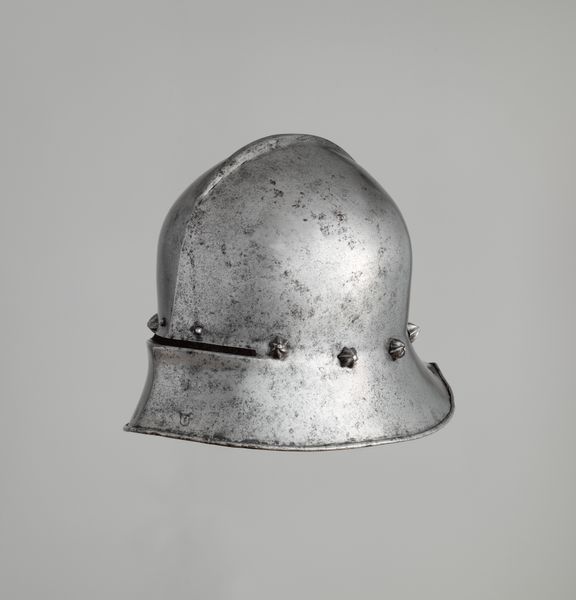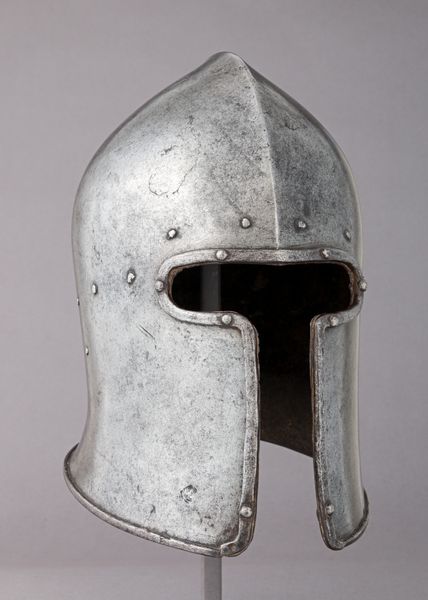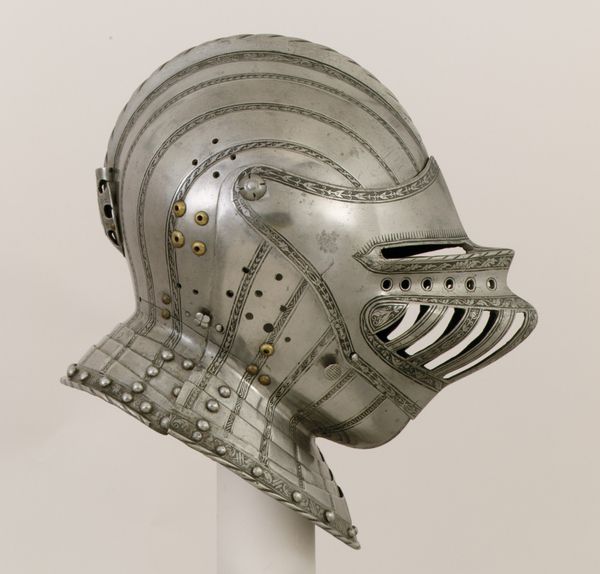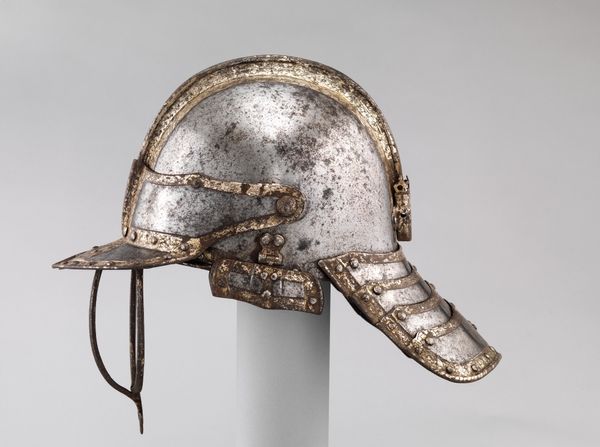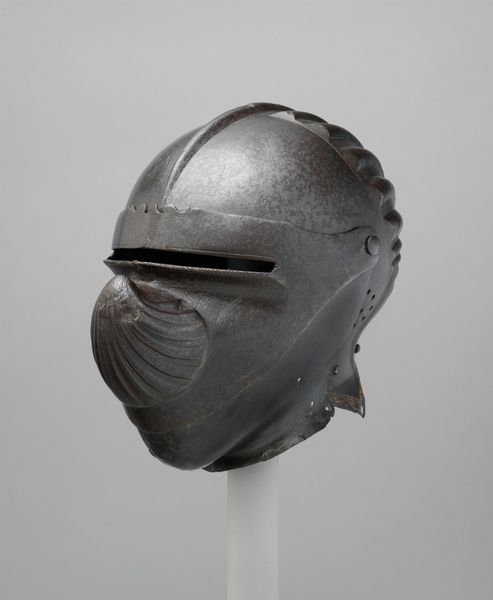
metal, sculpture
#
medieval
#
metal
#
form
#
sculpture
#
armor
Dimensions: D. of tail 7 1/2 in. (19.1 cm)
Copyright: Public Domain
Curator: Looking at this Sallet from the late 15th or early 16th century, currently housed at the Metropolitan Museum of Art, one is struck by the elegant simplicity of form disguising its function. Editor: My initial reaction is…cool! It’s functional, but possesses a real sculptural quality. You can almost feel the weight of the metal. Curator: Indeed. This piece of armor brings up important questions about identity and its connection to war, but I feel like that has been done to death, not in reality, but at least academically. We've learned the hard way just how dangerous performative war-like posturing is, so in viewing this "Sallet," I also look at those people who can't "posture war," or simply protect themselves because of race or socioeconomic status. Editor: Agreed, yet to fashion something like this required skilled labor; hammering, shaping, and treating metal with such precision. The rivets, the subtle curves – it’s undeniably a product of specialized craftsmanship. The time alone is something we take for granted, yet each hour spent meant sustenance for an individual, a home perhaps? Curator: Certainly. Thinking about those processes complicates our understanding of what we now frame as ‘medieval’. Labor, though, has always been inextricably linked to systems of power, which goes back to what I mentioned earlier about how this "protection" for war, or status, hasn't always been equally offered. And more profoundly, in these conflicts, some "identities" were historically being erased at the same rate as that very same metal that shielded its user from obliteration was being pounded, heated and perfected, to serve a chosen group. Editor: A poignant perspective. It reframes how we consider something designed ostensibly for a singular purpose. But from a different angle, consider the social implications. Demand drives production, and what was exchanged, consumed, or discarded in turn also defined a very precise kind of societal engagement. Curator: Exactly, its creation and use shaped lives, identities, and power dynamics that reverberate even now, perhaps more violently today than we give this helmet credit for. Editor: I appreciate how deeply this redirects us to see beyond simply its surface, and how even something as "utilitarian" is entangled in webs of social and material relationships. Curator: It reminds me, in return, to always look at how that kind of specialization, labor, that drove such specific craft often leads to systems where "protection" becomes weaponized against, and out of reach for some.
Comments
No comments
Be the first to comment and join the conversation on the ultimate creative platform.
